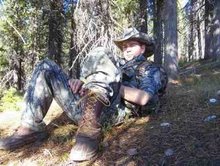Buffalo News
SULLYS HILL NATIONAL GAME PRESERVE, N.D. (AP) -- Bison being moved from here to Nebraska as part of a new federal approach to managing the animals were gathered up and shipped out Thursday with no problems, an official says.
The herd is being moved from the Sullys Hill preserve to the Fort Niobrara National Wildlife Refuge in Nebraska, as part of a multistate management plan announced earlier. Sullys Hill will get seven new bison from the National Buffalo Range in Montana.
The moves are aimed at better managing the bison and preserving their genetic purity.
"The U.S. Fish and Wildlife Service is beginning to manage our nation's refuge bison herds on a more holistic basis," said Paul Halko, a Fish and Wildlife Service refuge manager for Sullys Hill, near Devils Lake, as well as Benson and Nelson counties.
The Sullys Hill refuge, which covers just 1,675 acres, was crowded with the herd of 38 bison and a separate herd of about 25 elk, Halko said.
"The animals do consume a lot of forage. They're big, grazing animals. We (at Sullys Hill) have more of a responsibility to the habitat of other species, such as neotropical migrating songbirds," he said.
On Wednesday, the bison were put in a system of corrals and separated into bulls, cows, yearlings and calves, said Roger Hollevoet, the Fish and Wildlife manager of the Devils Lake Wetland Management District.
The animals had been conditioned to the process the past couple of weeks, Hollevoet said. Officials used a system of baited corrals to get the bison used to corrals and a skid-steer loader used to herd them.
On Thursday, loading the animals onto a semitrailer and another smaller truck "was pretty stress free," Hollevoet said. The animals left the preserve around 9:30 a.m. for the nine-hour ride south.
In Nebraska, the Sullys Hill bison will roam on the 19,131-acre Fort Niobrara refuge, which has room for the herd eventually to grow to a population of about 500, Halko said.
"What's exciting about the Sullys Hill herd is that there's been no detectable cattle hybridization in the herd," Halko said.
A 3-year-old genetic-testing program has found signs of crossbreeding with cattle in bison herds at some national refuges.
"You're not going to see it with the naked eye," Halko said. "It's detectable through markers, genetic markers, and you're not going to see anything that looks different with these bison. It's merely for the long-term health of the bison species."
The seven bison moving from the National Bison Range in northwestern Montana are genetically as pure as current technology can detect, Halko said. The Sullys Hill herd eventually will grow to about 10 animals, he said.
"One of the exciting things about these three refuges -- Sullys Hill, Niobrara and the Bison Range -- is that their founding purpose was the conservation of big game -- bison and elk. And here we are, 100 years later, serving in that same role," Halko said.
Hollevoet said the Montana bison will arrive at Sullys Hill sometime before Jan. 15.
